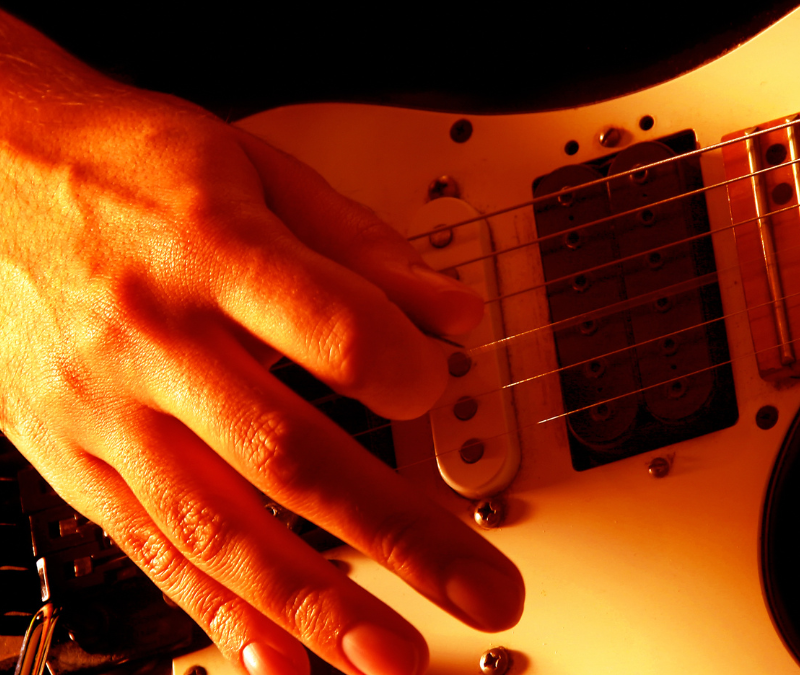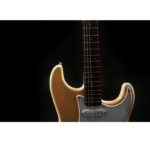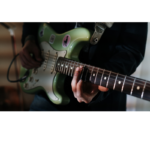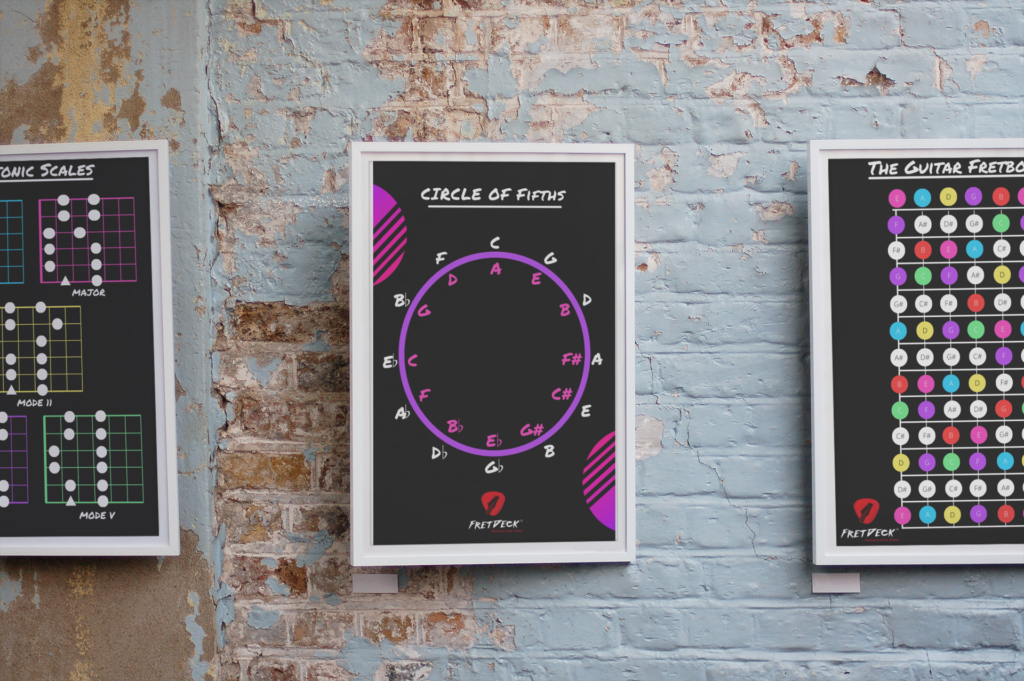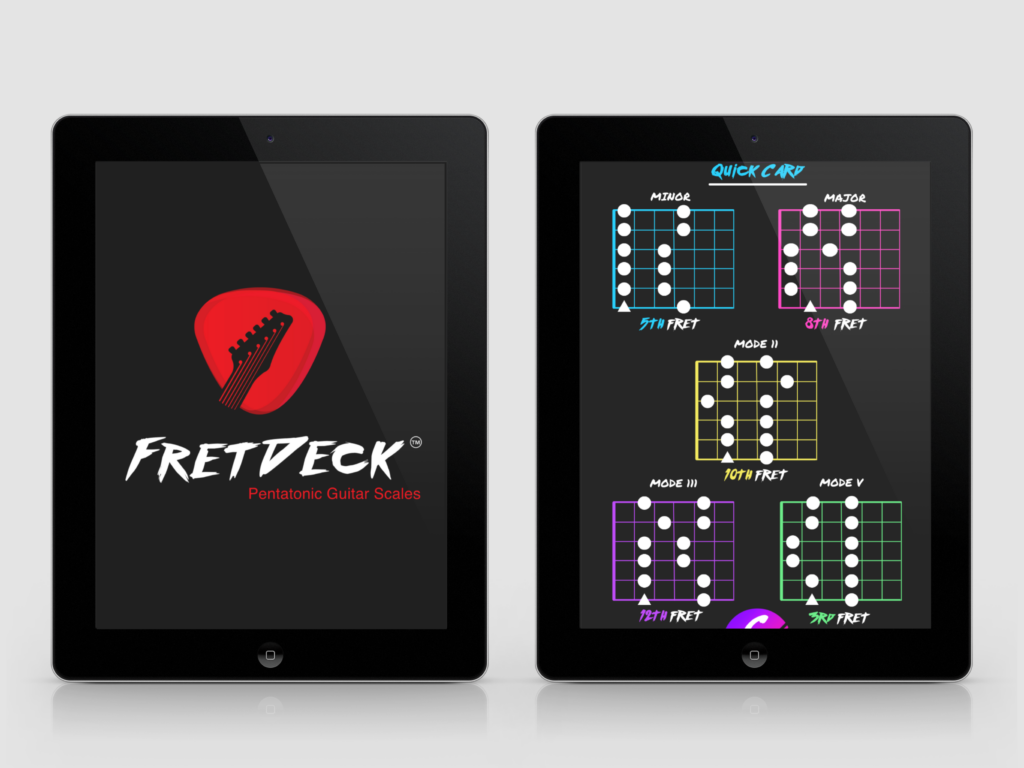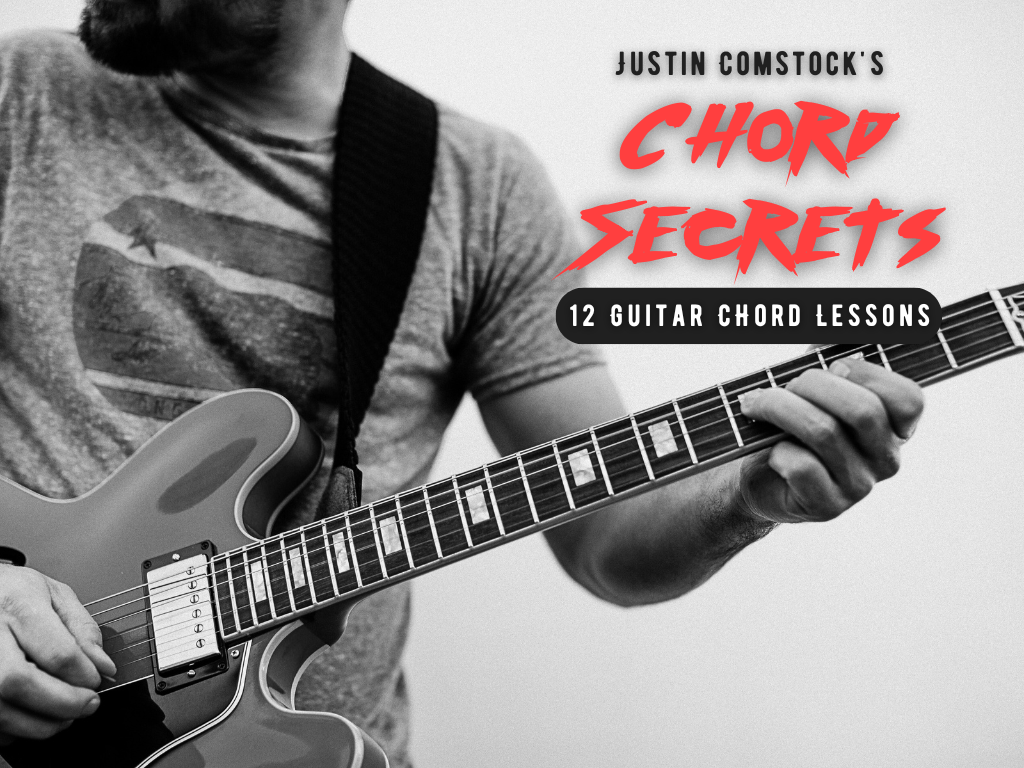Few concepts in guitar playing are as fundamental and versatile as the pentatonic scale. Its simplicity makes it an excellent starting point for beginners, while its depth allows seasoned players to explore endless creative possibilities. In this post, we’ll break down the pentatonic scale on guitar, examine its structure, and share unique ways to use it to enrich your playing. Whether you’re diving into blues, rock, jazz, or even folk, the pentatonic scale is your gateway to musical freedom.
What is the Pentatonic Scale?
The term “pentatonic” comes from the Greek words “penta” (five) and “tonic” (tones), meaning this scale has only five notes per octave. There are two main types:
- Major Pentatonic Scale: Based on the major scale, it omits the 4th and 7th degrees.
- Formula: 1, 2, 3, 5, 6
- Example in C: C, D, E, G, A
- Minor Pentatonic Scale: Derived from the natural minor scale, it omits the 2nd and 6th degrees.
- Formula: 1, b3, 4, 5, b7
- Example in A: A, C, D, E, G
Interestingly, these two types of pentatonic scales are interconnected. They share the same notes but differ in their tonal centers. For instance, the C major pentatonic and A minor pentatonic scales are relative, containing the same notes but with different root notes.
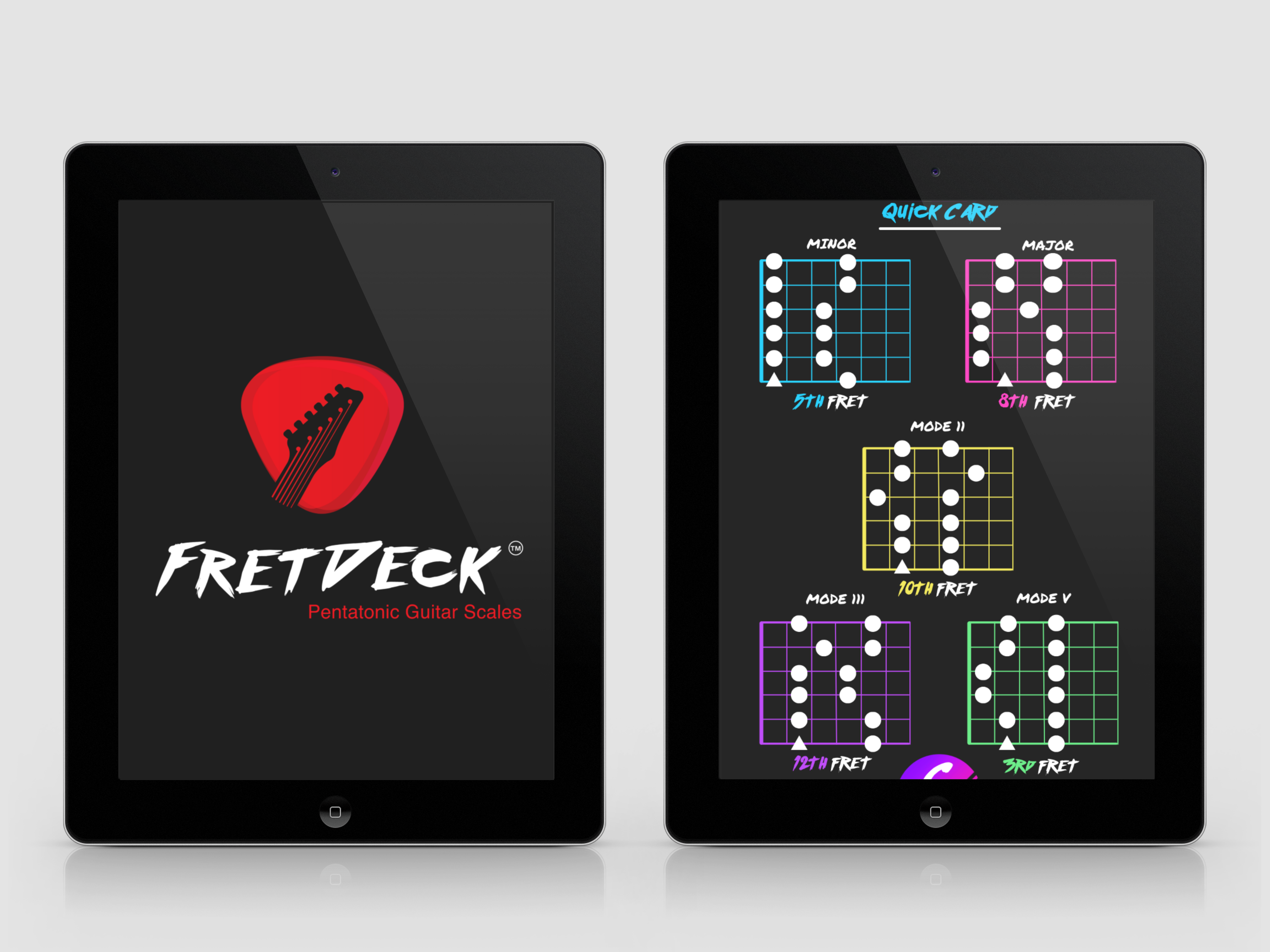
Download The FretDeck & Pentatonic Secrets Course!
Download Our Course
The Five Pentatonic Scale Shapes
To master the pentatonic scale on guitar, it is crucial to familiarize yourself with its five positions or “shapes.” These shapes are movable, meaning you can play them in any key by shifting them up or down the fretboard.
Shape 1 (Root Position)
- Minor Pentatonic: Root on the 6th string
- Example: A minor pentatonic (5th fret)
Shape 2
- Connects to Shape 1 higher up the neck
- Example: C minor pentatonic (8th fret)
Shape 3
- Root often starts on the 5th string
Shape 4
- Another position higher up, with root notes easily accessible
Shape 5
- Completes the cycle and connects back to Shape 1
Practicing these shapes sequentially will develop your understanding of the fretboard. Furthermore, connecting these shapes helps bridge the gaps between different areas of the neck.
Breaking Down the Pentatonic Scale
To make the pentatonic scale truly useful, it’s essential to move beyond simply memorizing shapes. Therefore, here are steps to deepen your understanding:
- Root Note Awareness: Identify the root note in each shape. This provides a tonal anchor and helps with improvisation.
- Interval Identification: Understand the intervals within each shape (e.g., root, minor 3rd, perfect 5th). This knowledge will help you target specific notes when soloing.
- Dynamic Practice: Experiment with different rhythms, dynamics, and articulations (e.g., legato, staccato).
Combining these steps will grant you both theoretical and practical knowledge of the pentatonic scale.
Unique Ways to Use the Pentatonic Scale
1. Sequence Patterns for Speed and Precision
Adding flair to your playing can begin with practicing sequence patterns. For example:
- 3-Note Sequence: Play three consecutive notes, then start the next group from the second note.
- Example in A minor: A-C-D, C-D-E, D-E-G…
This approach builds both speed and precision, making your solos sound more melodic and polished.
2. Hybrid Picking Lines
Incorporate hybrid picking to add texture and dynamics. Using a combination of pick and fingers allows you to pluck non-adjacent strings, creating interesting intervals and rhythmic variations.
3. Double Stops and Harmonized Lines
Double stops—playing two notes simultaneously—are a staple of blues and rock. Within the pentatonic scale, experiment with intervals like 3rds, 4ths, and 5ths to create harmonized lines.
For example, in A minor pentatonic:
- Play the notes A (5th string, 12th fret) and C (4th string, 10th fret) together.
4. Pentatonic Slides and Slurs
Sliding between notes in the pentatonic scale adds fluidity and expressiveness. Moreover, combining slides with hammer-ons and pull-offs creates smooth, vocal-like phrasing.
5. Pentatonic Over Chord Changes
Adapting the pentatonic scale to different chord tones can elevate your playing. For instance:
- Over an A7 chord, emphasize the A minor pentatonic.
- Over a D7 chord, shift to the D minor pentatonic for a bluesy feel.
6. Pentatonic “Outside” Playing
For a modern, jazz-influenced sound, use pentatonic scales from related keys. For example, when playing over A minor, experiment with B minor pentatonic to introduce tension and resolve.
7. Chord Embellishments
Using pentatonic notes to create riffs or embellishments around static chords is a powerful technique. This approach is common in funk and R&B.
For example:
- Play an E9 chord, then riff with the E minor pentatonic scale around it.
8. Combine Major and Minor Pentatonic Scales
Blues guitarists often blend major and minor pentatonic scales for a “sweet and sour” effect. For instance:
- In A blues, switch between A minor pentatonic and A major pentatonic to highlight different aspects of the harmony.

Download The FretDeck & Pentatonic Secrets Course!
Download Our Course
Developing Phrasing and Expression
Phrasing separates great guitarists from good ones. While using the pentatonic scale, focus on these elements:
- Bends: Aim for precise, in-tune bends to hit target notes with emotion.
- Vibrato: A controlled vibrato can add life to even the simplest lines.
- Silence: Don’t be afraid to pause and let notes breathe.
- Dynamics: Experiment with volume swells and pick attack to vary intensity.
Additionally, practicing phrasing with intent will help you craft memorable solos.
Practical Exercises
1. Pentatonic Scale in Thirds
Play through the scale, skipping every other note, to create a harmonized effect.
2. Call and Response
Improvise a “call” using one pentatonic shape, then “respond” in another shape higher up the neck.
3. Loop-Based Improvisation
Record a simple chord progression and practice improvising over it using pentatonic scales. Start with root notes, then expand to include passing tones and embellishments.
Famous Solos and Songs
The pentatonic scale is the backbone of countless iconic guitar solos. Here are a few examples:
- Eric Clapton – “Crossroads” (A minor pentatonic)
- Jimi Hendrix – “Red House” (E minor pentatonic)
- David Gilmour – “Comfortably Numb” (B minor pentatonic)
Analyze these solos to see how the pentatonic scale is applied creatively. Additionally, try to replicate their phrasing for inspiration.
Conclusion
The pentatonic scale on guitar is a treasure trove of creative potential. By exploring its shapes, intervals, and unique applications, you’ll uncover new ways to express yourself musically. Whether you’re a beginner or a seasoned player, the pentatonic scale remains an essential tool for improvisation and composition.
So, grab your guitar and start experimenting with these techniques. Indeed, the journey to mastering the pentatonic scale is as rewarding as the destination.
For a structured approach to mastering pentatonic scales, consider following our 30-Day Practice Routine. This guide offers daily exercises designed to enhance your proficiency and creativity with the pentatonic scale.
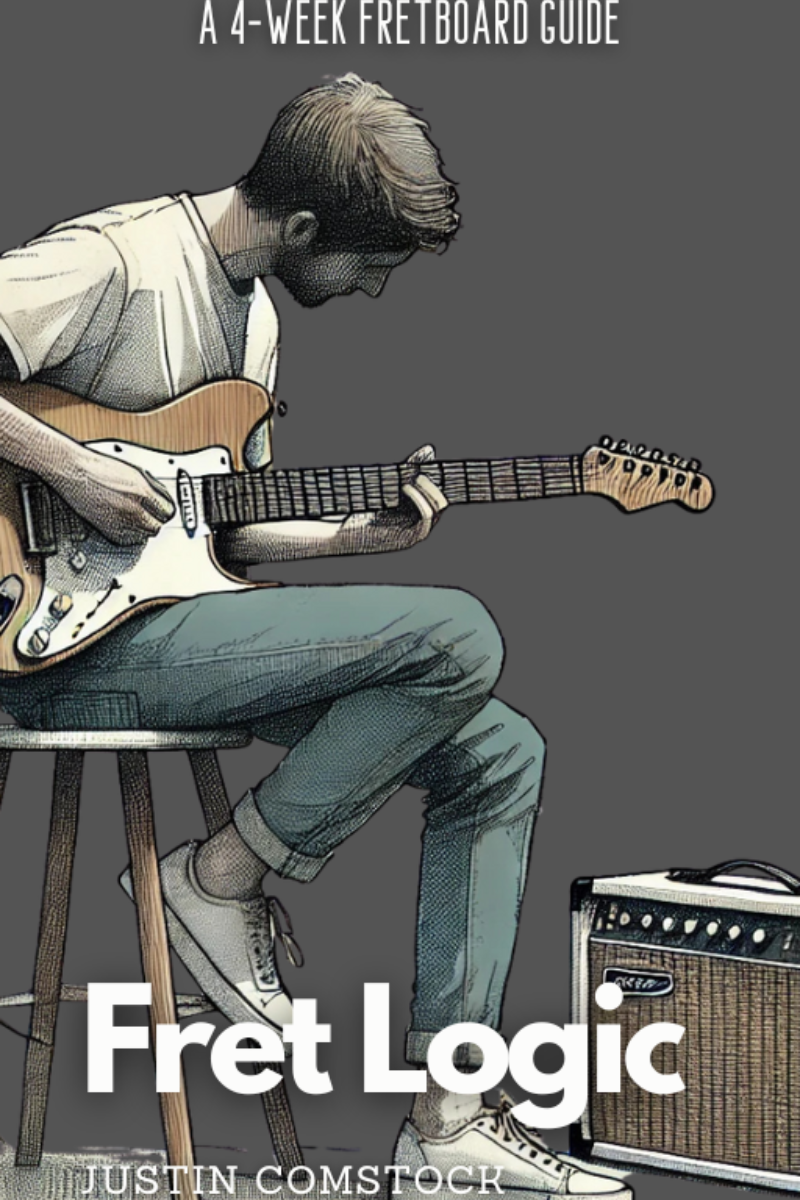
Join Guitar Freaks Hangout on Discord! 🎸
Get Fret Logic FREE!
Join the Guitar Freaks Hangout Discord and get exclusive access to my entire e-book, Fret Logic! Master the fretboard and elevate your solos with this comprehensive guide.
👉 Don’t miss out—join now and download your free copy!

